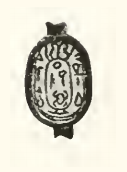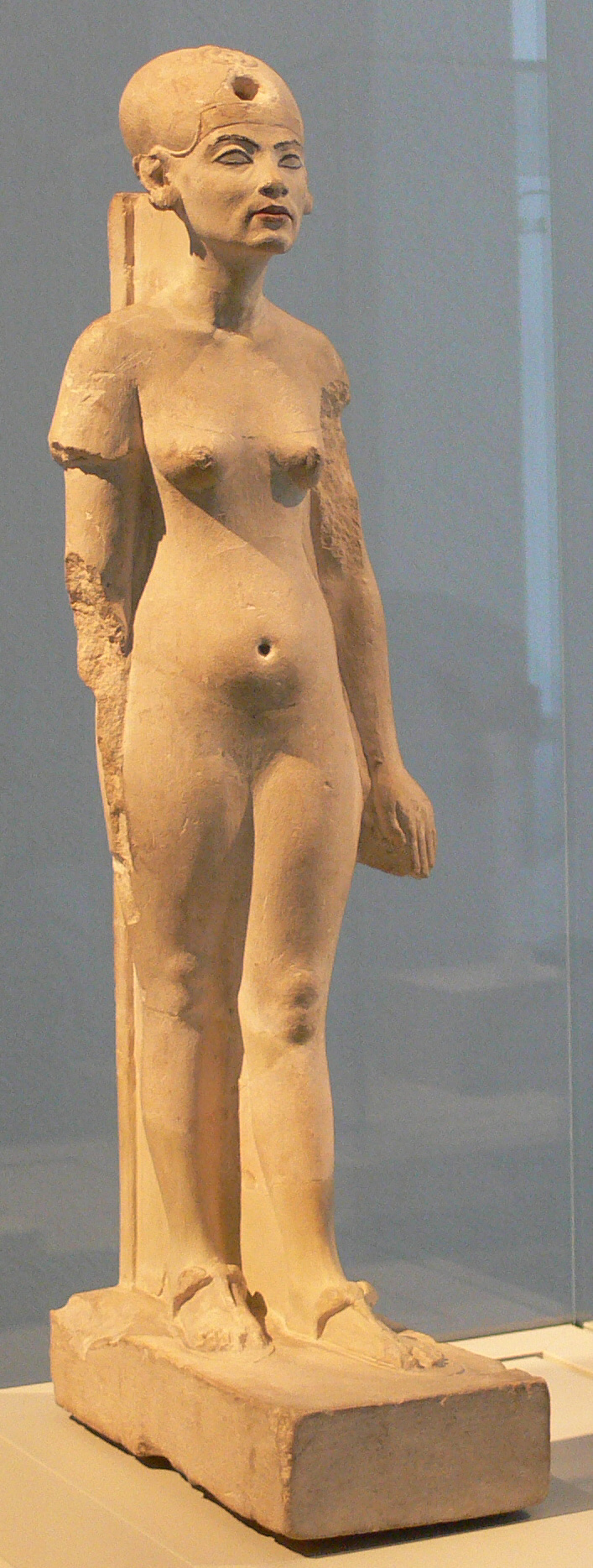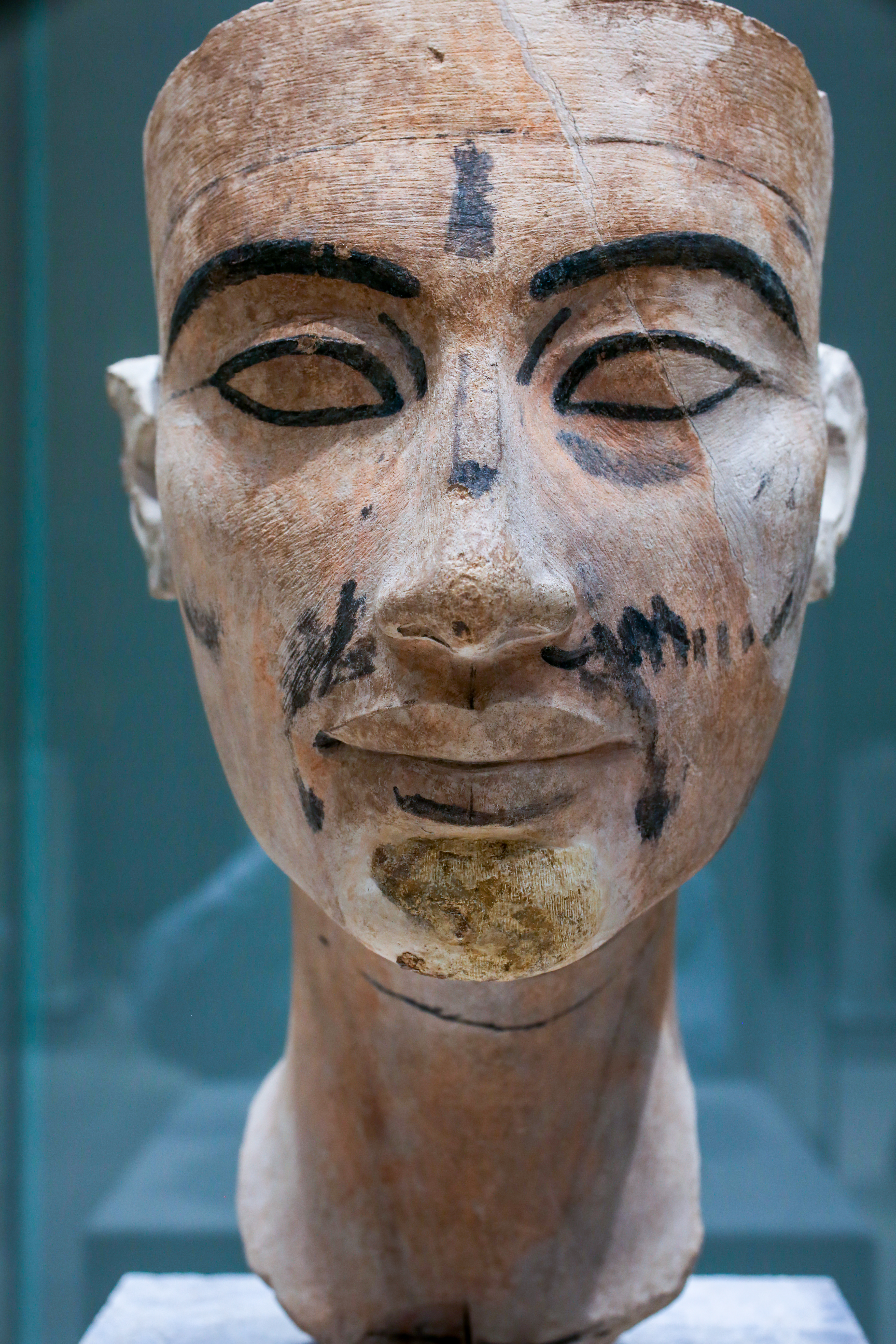|
Eighteenth Dynasty Of Egypt
The Eighteenth Dynasty of Egypt (notated Dynasty XVIII, alternatively 18th Dynasty or Dynasty 18) is classified as the first dynasty of the New Kingdom of Egypt, the era in which ancient Egypt achieved the peak of its power. The Eighteenth Dynasty spanned the period from 1550/1549 to 1292 BC. This dynasty is also known as the Thutmoside Dynasty for the four pharaohs named Thutmose. Several of Egypt's most famous pharaohs were from the Eighteenth Dynasty, including Tutankhamun. Other famous pharaohs of the dynasty include Hatshepsut (c. 1479 BC–1458 BC), the longest-reigning woman pharaoh of an indigenous dynasty, and Akhenaten (c. 1353–1336 BC), the "heretic pharaoh", with his Great Royal Wife, Nefertiti. The Eighteenth Dynasty is unique among Egyptian dynasties in that it had two Queen regnant, queens regnant, women who ruled as sole pharaoh: Hatshepsut and Neferneferuaten, usually identified as Nefertiti. History Early Dynasty XVIII Dynasty XVIII was founded by Ahmo ... [...More Info...] [...Related Items...] OR: [Wikipedia] [Google] [Baidu] |
Thutmose
Thutmose (; also rendered Thutmoses, Thutmosis, Tuthmose, Tutmosis, Thothmes, Tuthmosis, Thutmes, Dhutmose, Djhutmose, Djehutymes, etc.) is an anglicization of the ancient Egyptian personal name ''dhwty-ms'', usually translated as "Born of the god Thoth". Thoutmôsis (in Ancient Greek Θούθμωσις / Thoúthmôsis) is the Hellenized form of the Egyptian Ḏḥwtj-mś (reconstructed pronunciation: /tʼaˈħawtij ˈmissaw/) and means "Born of Thoth". This theophoric name was part of the royal titulary of four pharaohs of the 18th dynasty as the name of Sa-Rê or "birth name". It was also worn by the eldest son of Amenhotep III, high priest of Ptah, as well as by a vizier who exercised his functions successively under Thutmose IV and Amenhotep III. Under this last king and under his successor, Amenhotep IV, two other high dignitaries, royal sons of Kush, similarly called themselves "Born of Thoth". Ancient Egyptians Monarchs and royals The name was common among royals of the ... [...More Info...] [...Related Items...] OR: [Wikipedia] [Google] [Baidu] |
Kamose
Kamose was the last king of the Thebes, Egypt, Theban Seventeenth dynasty of Egypt, Seventeenth Dynasty at the end of the Second Intermediate Period. Kamose is usually ascribed a reign of three years (his highest attested regnal year), although some scholars now favor giving him a longer reign of approximately five years. He was the son of Seqenenre Tao and the brother of Ahmose I, founder of the Eighteenth dynasty of Egypt, Eighteenth Dynasty. His mother is unknown, but is thought to be Ahhotep I. His reign is important for the decisive military initiatives he took against the Hyksos, who had come to rule much of Ancient Egypt. His father had begun the initiatives and lost his life in battle with the Hyksos. It is thought that his mother, as regent, continued the campaigns after the death of Kamose, and that his full brother made the final conquest of them and united all of Egypt. Campaigns ''Casus Belli'' Kamose was the final king in a succession of native Egyptian kings at ... [...More Info...] [...Related Items...] OR: [Wikipedia] [Google] [Baidu] |
Ahmose I
Ahmose I (''Amosis'', ''Aahmes''; meaning "Iah (the Moon) is born") was a pharaoh and founder of the Eighteenth Dynasty of Egypt in the New Kingdom of Egypt, the era in which ancient Egypt achieved the peak of its power. His reign is usually dated to the mid-16th century BC at the beginning of the Late Bronze Age. During his reign, Ahmose completed the conquest and expulsion of the Hyksos, restored Theban rule over Lower- and Upper Egypt, and successfully reasserted Egyptian power in its formerly subject territories of Nubia and Canaan. He then reorganized the administration of the country, reopened quarry, quarries, mining, mines and trade routes and began massive construction projects of a type that had not been undertaken since the time of the Middle Kingdom of Egypt, Middle Kingdom. This building program culminated in the construction of the last Egyptian pyramids, pyramid built by native Egyptian rulers. Ahmose's reign laid the foundations for the New Kingdom of Egypt, New ... [...More Info...] [...Related Items...] OR: [Wikipedia] [Google] [Baidu] |
Head Of An Early Eighteenth Dynasty King, Ca
A head is the part of an organism which usually includes the ears, brain, forehead, cheeks, chin, eyes, nose, and mouth, each of which aid in various sensory functions such as sight, hearing, smell, and taste. Some very simple animals may not have a head, but many bilaterally symmetric forms do, regardless of size. Heads develop in animals by an evolutionary trend known as cephalization. In bilaterally symmetrical animals, nervous tissue concentrate at the anterior region, forming structures responsible for information processing. Through biological evolution, sense organs and feeding structures also concentrate into the anterior region; these collectively form the head. Human head The human head is an anatomical unit that consists of the skull, hyoid bone and cervical vertebrae. The skull consists of the brain case which encloses the cranial cavity, and the facial skeleton, which includes the mandible. There are eight bones in the brain case and fourteen in the facia ... [...More Info...] [...Related Items...] OR: [Wikipedia] [Google] [Baidu] |
Thutmosis III-2
Thutmose (; also rendered Thutmoses, Thutmosis, Tuthmose, Tutmosis, Thothmes, Tuthmosis, Thutmes, Dhutmose, Djhutmose, Djehutymes, etc.) is an anglicization of the ancient Egyptian personal name ''dhwty-ms'', usually translated as "Born of the god Thoth". Thoutmôsis (in Ancient Greek Θούθμωσις / Thoúthmôsis) is the Hellenized form of the Egyptian Ḏḥwtj-mś (reconstructed pronunciation: /tʼaˈħawtij ˈmissaw/) and means "Born of Thoth". This theophoric name was part of the royal titulary of four pharaohs of the 18th dynasty as the name of Sa-Rê or "birth name". It was also worn by the eldest son of Amenhotep III, high priest of Ptah, as well as by a vizier who exercised his functions successively under Thutmose IV and Amenhotep III. Under this last king and under his successor, Amenhotep IV, two other high dignitaries, royal sons of Kush, similarly called themselves "Born of Thoth". Ancient Egyptians Monarchs and royals The name was common among royals of the E ... [...More Info...] [...Related Items...] OR: [Wikipedia] [Google] [Baidu] |
Nofretete Neues Museum
Nefertiti () () was a queen of the Eighteenth Dynasty of Egypt, 18th Dynasty of Ancient Egypt, the Great Royal Wife, great royal wife of Pharaoh Akhenaten. Nefertiti and her husband were known for their radical overhaul of state religious policy, in which they promoted the earliest known form of monotheism, Atenism, centered on Aten, the sun disc and its direct connection to the royal household. With her husband, she reigned at what was arguably the wealthiest period of ancient Egyptian history. After her husband's death, some scholars believe that Nefertiti ruled briefly as the female pharaoh known by the throne name, Neferneferuaten and before the ascension of Tutankhamun, although this identification is Neferneferuaten#Nefertiti, a matter of ongoing debate. If Nefertiti did rule as pharaoh, her reign was marked by the fall of Amarna and relocation of the capital back to the traditional city of Thebes, Egypt, Thebes. In the 20th century, Nefertiti was made famous by the disco ... [...More Info...] [...Related Items...] OR: [Wikipedia] [Google] [Baidu] |
Neferneferuaten
Ankhkheperure-Merit-Neferkheperure/Waenre/Aten Neferneferuaten (), or "Neferneferuaten", is the name of a queen regnant ('female pharaoh, king') of ancient Egypt who reigned in her own right near the end of the Amarna Period during the Eighteenth dynasty of Egypt, Eighteenth Dynasty. Her name features feminine Grammatical gender, gender traces; and one of her epithets was ''Akhet-en-hyes'' ("Effective for her husband"). This epithet also features in one version of her Nomen (ancient Egypt), nomen (birth name) cartouche. (See Ancient Egyptian royal titulary.) She is distinguished from the king Smenkhkare, with whom she shared the prenomen (throne name) ''Ankhkheperure'', by the presence of epithets in both cartouches. It has been suggested that she was in fact Smenkhkare's wife Meritaten or his predecessor Akhenaten's widow Nefertiti. The Golden Nut Pectoral (Carter no. 261p1) The golden Nut Pectoral (Ancient Egypt), pectoral (Carter no. 261p1) was also reused for the funeral o ... [...More Info...] [...Related Items...] OR: [Wikipedia] [Google] [Baidu] |
Queen Regnant
A queen regnant (: queens regnant) is a female monarch, equivalent in rank, title and position to a king. She reigns ''suo jure'' (in her own right) over a realm known as a kingdom; as opposed to a queen consort, who is married to a reigning king; or a queen ''regent'', who is the guardian of a child monarch and rules ''pro tempore'' in the child's stead or instead of her husband who is absent from the realm, be it in sharing power or in ruling alone. A queen ''regnant'' is sometimes called a woman king. A princess, duchess, or grand duchess regnant is a female monarch who reigns ''suo jure'' over a principality or (Grand duchy, grand) duchy; an empress regnant is a female monarch who reigns ''suo jure'' over an empire. A queen regnant possesses all the powers, Constitutional monarchy, such as they may be, of the monarchy, whereas a queen consort or queen regent shares her spouse's or child's rank and titles but does not share the sovereignty of her spouse or child. The hus ... [...More Info...] [...Related Items...] OR: [Wikipedia] [Google] [Baidu] |
Nefertiti
Nefertiti () () was a queen of the Eighteenth Dynasty of Egypt, 18th Dynasty of Ancient Egypt, the Great Royal Wife, great royal wife of Pharaoh Akhenaten. Nefertiti and her husband were known for their radical overhaul of state religious policy, in which they promoted the earliest known form of monotheism, Atenism, centered on Aten, the sun disc and its direct connection to the royal household. With her husband, she reigned at what was arguably the wealthiest period of ancient Egyptian history. After her husband's death, some scholars believe that Nefertiti ruled briefly as the female pharaoh known by the throne name, Neferneferuaten and before the ascension of Tutankhamun, although this identification is Neferneferuaten#Nefertiti, a matter of ongoing debate. If Nefertiti did rule as pharaoh, her reign was marked by the fall of Amarna and relocation of the capital back to the traditional city of Thebes, Egypt, Thebes. In the 20th century, Nefertiti was made famous by the disco ... [...More Info...] [...Related Items...] OR: [Wikipedia] [Google] [Baidu] |
Great Royal Wife
Great Royal Wife, or alternatively, Chief King's Wife () is the title that was used to refer to the Queen consort, principal wife of the pharaoh of Ancient Egypt, who served many official functions. Description While most ancient Egyptians were monogamy, monogamous, a male pharaoh would have had other, lesser wives and concubines in addition to the Great Royal Wife. This arrangement would allow the pharaoh to enter into diplomatic marriages with the daughters of allies, as was the custom of ancient kings. In the past the order of succession in Ancient Egypt was thought to pass through the royal women. This theory, referred to as the Heiress Theory, has been rejected regarding the Eighteenth Dynasty ever since a 1980s study of its royalty.O'Connor and Cline (Editors), Amenhotep III: Perspectives on his reign, pg 6 The throne likely passed to the eldest living son of those pharaohs. The mother of the heir to the throne was not always the Great Royal Wife, but once a pharaoh was c ... [...More Info...] [...Related Items...] OR: [Wikipedia] [Google] [Baidu] |
Akhenaten
Akhenaten (pronounced ), also spelled Akhenaton or Echnaton ( ''ʾŪḫə-nə-yātəy'', , meaning 'Effective for the Aten'), was an ancient Egyptian pharaoh reigning or 1351–1334 BC, the tenth ruler of the Eighteenth Dynasty of Egypt, Eighteenth Dynasty. Before the fifth year of his reign, he was known as Amenhotep IV (, meaning "Amun is satisfied", Hellenized as ''Amenophis IV''). As a pharaoh, Akhenaten is noted for abandoning traditional ancient Egyptian religion of polytheism and introducing Atenism, or worship centered around Aten. The views of Egyptologists differ as to whether the religious policy was absolutely monotheism, monotheistic, or whether it was monolatristic, religious syncretism, syncretistic, or henotheistic. This culture shift away from traditional religion was reversed after his death. Akhenaten's monuments were dismantled and hidden, his statues were destroyed, and his name Damnatio memoriae, excluded from regnal list, lists of rulers compiled by lat ... [...More Info...] [...Related Items...] OR: [Wikipedia] [Google] [Baidu] |







